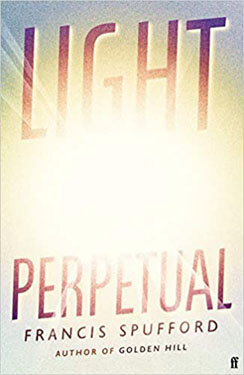In November 1944 a German rocket exploded in a working class area of South London killing many civilians. It's haunting to wonder what would have happened if those lives hadn't been lost. Francis Spufford takes this as the basis of his novel “Light Perpetual” where he imaginatively “rescues” five children from this fate and fictionally builds the full trajectory of their lives complete with all their respective triumphs, failures, passions and disappointments. Each section leaps forward in time by fifteen years to give snapshots not only of how their lives have changed but how our culture and society has evolved over time. I immediately felt sympathetic to this structure as it's very similar to my favourite novel “The Waves” by Virginia Woolf – though Spufford's fiction uses a more straightforward prose style and focuses on a class of people Woolf didn't often represent in her fiction. Not only does this consistently compelling alternative history spotlight the varied lives and concerns of this working class area of London, but it queries the way in which our social circumstances affect or determine our choices and views in life.
I admire the statement the author makes by nobly filling out five lives which aren't memorialised in any way other than as part of a number that perished during a WWII attack. However, a concern I had while reading was that if you took off the very beginning and very end of this book it wouldn't be any different from a straightforward historical novel following a group of people over the course of their lives. I wondered if this meant its central concept is more of a gimmick than something which is artfully woven into the texture of its story. But I think Spufford is making an interesting point in these lives which interact with historical events and other lives to subtly change the state of the world in ways we wouldn't necessarily notice. Many alternate histories such as “The Alteration” by Kingsley Amis or “The Plot Against America” by Philip Roth imaginatively construct a story based on vast political changes involving famous figures. What Spufford does is more subtle and challenging because it asks in what way unsung figures alter and influence the world.
Though I was engaged with most of these characters' stories and enjoyed following the curious paths their lives take over many years, my main issue with the novel is that I found some more interesting than others and the periods of time we follow them through sometimes pass too quickly. Some storylines which gripped me the most include one character's synaesthesia and how it influences her development as a musician, another character's struggle with mental illness which leads him into an agonizing circular thought process and another character's dangerous attraction towards a man who is a white supremacist. However, I was less engaged by stories involving a property developer con artist with a penchant for Maria Callas and a typesetter who gets involved with print union battles. I realise my preferences come down to personal taste, but it's an issue that often comes with novels which encompass storylines involving multiple characters. I also felt some transitions between sections were a little heavy handed. For instance, a scene with a horrific racist attack is immediately followed by a romantic sex scene involving a mixed race couple.
However, the overall effect of this book is quite moving especially as it describes the transition we all must make towards death and relinquishing our place in the world. It consistently offers many surprises and delights in the unexpected avenues the characters' lives take. The novel also poignantly describes how our lives are never limited to one path or another but contain multiple possibilities which sprawl out in many different directions at every instant of our lives. There's something beautifully hopeful about this.








